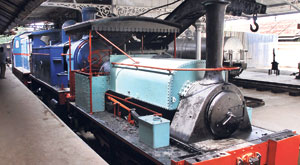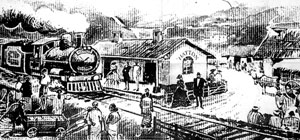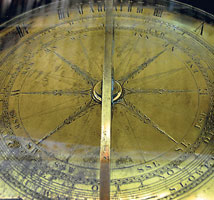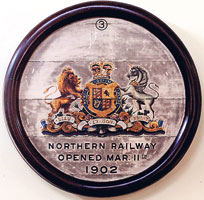After several false starts, finally, Sri Lanka officially has a railway museum. That is the good news. The bad news is that though it was officially declared open last month, it’s still a long way from being complete or even halfway near a railway buff’s dream.
Those planning the museum however are doing their best to make that dream a reality, bringing in museum pieces currently stored in stations all over the country. There are plans to have guided tours in all three languages and even make the premises and washrooms wheel chair accessible for the disabled.
 |
| Some of the items on display: An old steam locomotaive. |
|
| The sun dial |
|
| A roundel indicating the opening of the Northern Railway. |
Sri Lanka’s railway history dates back to 1864, when the first train, carrying the Duke of Brabant ran from Colombo to Ambepussa and back. The service was opened to the public however only in 1865. Ever since 1964 which marked a century of railways in the country, plans have been afoot to open a museum, says Vinodh L.J. Wickremeratne, railway enthusiast and Founder/Secretary of the Model Railroad Club of Sri Lanka.
“During the 1970s a small museum was opened at the Fort Station but it had to give way to expansion of the station.
According to him, the collection of artefacts had begun from 1964 when the idea of a museum was first mooted, but some items of historic value have unfortunately been disposed of over the years. “In 1989, to commemorate 125 years of railway service in the country, a great exhibition was planned. However, it took 11 years to accomplish it, and in 2000 a fantastic exhibition was put on after which the artefacts again went back into storage,” he says.
S. W. Munesinghe, Planning Officer Sri Lanka Railways says that serious thinking has been done since the 1980s to open a museum with various committees appointed but being a government department with a lot of bureaucracy, very little could be done. Even now, the cost of achieving what they have in mind is a major worry. It has been proposed that a trust fund be established so that the board can then have authority to collect funds and seek sponsorships from international agencies.
“This year’s budget has allocated Rs. 1000,000 for the museum. Many people think that the museum is not a priority, but we feel that it is important to preserve what we have for the future generations. What we have is of great historical value and should not be allowed to go to waste,” Mr. Munesinghe said.
The museum is located at Maradana, at the original Colombo Terminus, the first railway station of the country.
The decor has been restored to what it was at that time with the original arches, wooden plated two winged fans (still working) and the original gas lamps used although they have been upgraded to use electric bulbs. The artefacts are supposedly, no less than 100 years old. Among the items on display are ancient telephone systems and signalling equipment, the original British flag flown at the terminus, some uniforms belonging to railway personnel, a huge sun dial, and some old steam locomotives.
The museum also has its own website, www.srilankarailwaymuseum.lk, although this too is currently a work in progress. Hopefully, both will be complete soon, and offer the people a comprehensive idea of their railway history. Once the museum is developed to its full potential, it could be a fascinating and profitable tourist attraction.
Down the track of history
 |
| An artist’s impression of Hatton Railway station of a bygone era |
The railway system was established in Sri Lanka because of the agitation of the European coffee and later tea planters who wanted a viable transport system to send their goods to the port.
How the railway network was painstakingly laid out throughout the country till the late 1920s is in itself an interesting history beyond the scope of this article but the laying of rails through the hill country up to Kandy within three and a half years is considered an engineering feat on par with anything the world can rival.
The Uva railway is considered to be the world’s highest broad gauge line (gauge is the distance between two rails), reaching a summit level of 6226 ft at Pattipola. |




